The Dos and Don'ts of Home Safety
When it comes to ensuring the safety of your home, knowing the dos and don'ts can make all the difference. Think of your home as a fortress; you wouldn't leave the gates wide open for intruders, right? Just as you secure your castle, you need to be vigilant about the potential hazards lurking within. From fire risks to security threats, understanding the essentials of home safety is crucial for protecting your loved ones and belongings.
Let's dive into the dos first. One of the most important things you can do is to install smoke detectors in key areas of your home. These life-saving devices are your first line of defense against fires. Additionally, remember to check them regularly and replace batteries as needed. Another critical step is to create a safety plan that includes emergency contacts and evacuation routes. This ensures that everyone in your household knows what to do in case of an emergency.
On the flip side, there are some don'ts that you should keep in mind. For instance, never ignore warning signs of potential hazards, such as flickering lights or unusual smells. These could indicate electrical issues that require immediate attention. Also, don’t underestimate the importance of securing your home. Leaving windows and doors unlocked, especially at night, can invite trouble. Always make it a habit to lock up and consider investing in a robust security system to deter intruders.
Furthermore, when it comes to child safety, don't overlook the importance of childproofing your home. This means storing hazardous materials out of reach and ensuring that toys are age-appropriate. Remember, children are naturally curious, and their safety is paramount. On the other hand, you should definitely do take the time to educate your kids about safety. Teach them what to do in case of a fire or if they encounter a stranger. Knowledge is power, and it can empower them to make safe choices.
In addition to these general tips, it's essential to be aware of common home hazards, especially in areas like kitchens and bathrooms where slips and falls are frequent. Make it a point to keep these areas tidy and free from clutter. You can even use non-slip mats to enhance safety in these high-risk zones. And while you're at it, don't forget about electrical safety—overloaded outlets can lead to fires, so be sure to use power strips wisely and avoid daisy-chaining them together.
In summary, maintaining a safe home environment requires a proactive approach. By following the dos and avoiding the don'ts, you can significantly reduce risks and ensure that your home remains a safe haven for you and your loved ones. Remember, safety is not just a one-time effort; it requires ongoing attention and vigilance. So, stay informed, stay prepared, and keep that fortress secure!
- What are the most important safety devices to have in my home?
Smoke detectors, fire extinguishers, and security systems are essential for a safe home environment.
- How often should I test my smoke detectors?
It's recommended to test your smoke detectors monthly and replace the batteries at least once a year.
- What should I include in an emergency kit?
Your emergency kit should include water, non-perishable food, a flashlight, batteries, a first-aid kit, and important documents.
- How can I childproof my home effectively?
Store hazardous items out of reach, use safety locks on cabinets, and create safe play areas for children.
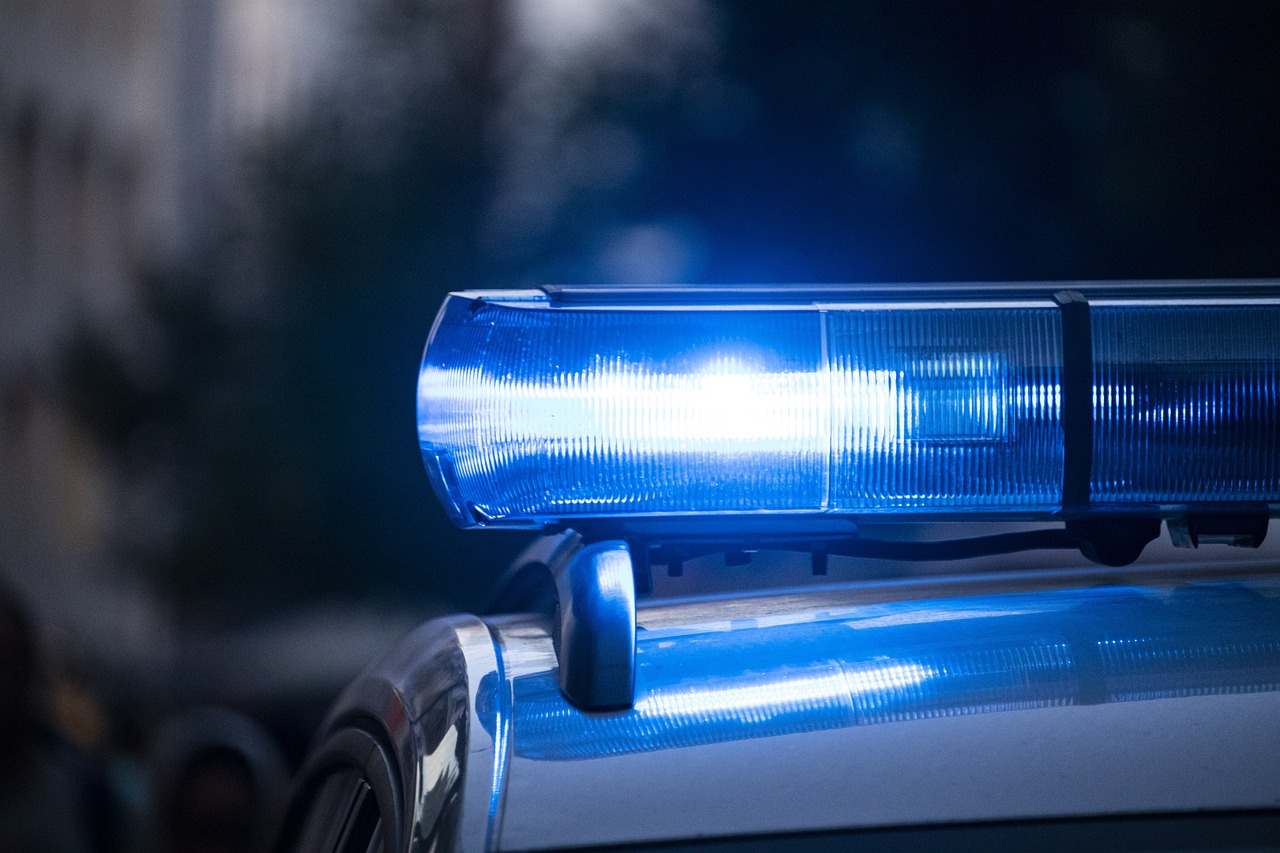
Understanding Home Safety Basics
Home safety is not just a buzzword; it's a crucial aspect of living that often gets overlooked in our busy lives. Understanding the basics of home safety can be the difference between a secure environment and a potential disaster waiting to happen. Every home has its unique risks, but being aware of these dangers is the first step in preventing accidents and injuries. Just think of your home as a fortress; if you know where the weak points are, you can fortify them effectively.
One of the foundational concepts of home safety is awareness. Awareness means recognizing the everyday hazards that can lead to accidents. For instance, do you know how many times you’ve tripped over a shoe left by the front door? Or how many times you’ve had to navigate through cluttered hallways? These seemingly minor issues can escalate into serious safety concerns. By being conscious of your surroundings and the layout of your home, you can make significant improvements to your safety.
Moreover, it's essential to consider the different types of hazards that exist in a typical household. They can be categorized into various types, such as:
- Physical Hazards: These include slips, trips, and falls that can occur on stairs or uneven surfaces.
- Fire Hazards: Anything from faulty wiring to unattended candles can pose a fire risk.
- Chemical Hazards: Cleaning supplies and other household chemicals can be dangerous, especially if not stored properly.
- Electrical Hazards: Overloaded outlets or frayed cords can lead to electrical fires or shocks.
Understanding these categories helps in pinpointing where to focus your safety efforts. For example, if you have young children, you might prioritize childproofing measures to prevent physical hazards. On the other hand, if you live in an older home, it may be wise to inspect for electrical hazards regularly.
Another critical aspect of home safety is the importance of regular maintenance. Just like a car that needs oil changes, your home requires ongoing care to maintain its safety features. This includes checking smoke detectors, ensuring that fire extinguishers are charged, and keeping pathways clear of clutter. Regularly scheduled maintenance can prevent minor issues from becoming major problems.
In summary, understanding home safety basics involves awareness of potential risks, categorizing these hazards, and committing to regular maintenance. By taking these steps, you can significantly reduce the likelihood of accidents and create a secure haven for yourself and your loved ones.
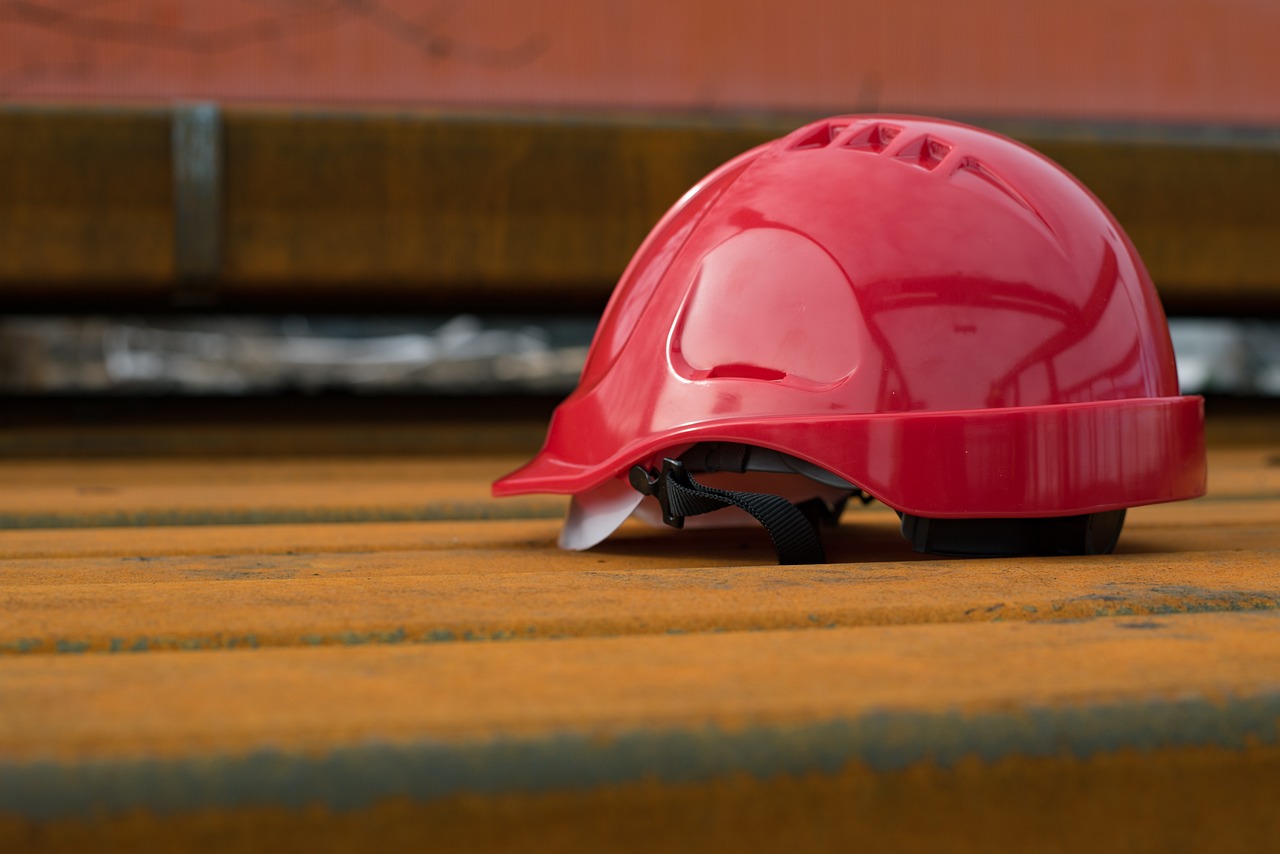
Essential Safety Equipment
When it comes to safeguarding your home, having the right is non-negotiable. Think of your home as a fortress; without the right defenses, it becomes vulnerable to a variety of risks. From fires to break-ins, being prepared is your best line of defense. So, what exactly should you have on hand? Let’s dive into the must-have safety devices that not only protect your property but also give you peace of mind.
First on the list is the smoke detector. This little gadget is your first alert system in case of a fire. Imagine being jolted awake by the piercing sound of a smoke detector, giving you precious moments to escape a potentially life-threatening situation. There are different types of smoke detectors available, including ionization and photoelectric models. Ionization detectors are excellent for detecting fast-flaming fires, while photoelectric ones are better for smoldering fires. Choosing the right one can make all the difference in an emergency.
To ensure your smoke detectors are always ready to spring into action, regular maintenance is key. Testing them monthly and replacing the batteries at least once a year should be part of your home safety routine. Create a simple maintenance schedule; for example, you might choose to do this during daylight saving time changes. It’s a small effort that can lead to significant safety benefits.
When selecting a smoke detector, consider your home’s layout and the specific needs of your family. For larger homes, you might need multiple detectors placed strategically in bedrooms, hallways, and living areas. Don’t forget to check for features like interconnected alarms, which can alert you throughout the house if one goes off. This interconnectedness acts as a safety net, ensuring that everyone is aware of a potential danger.
Here’s a quick maintenance checklist to keep your smoke detectors in top shape:
- Test each smoke detector monthly.
- Replace batteries at least once a year.
- Clean detectors every six months to remove dust and debris.
- Replace the entire unit every ten years.
Next up is the fire extinguisher. This handy device can be a game-changer in the event of a small fire. Think of it as your personal fire-fighting tool, ready to tackle flames before they spread. It’s essential to have at least one fire extinguisher in your home, ideally located in the kitchen, where most fires start. Familiarize yourself with how to use it; remember the acronym PASS—Pull, Aim, Squeeze, and Sweep. Knowing how to operate a fire extinguisher can turn a potentially disastrous situation into a manageable one.
Another critical piece of safety equipment is a security system. In a world where home invasions can happen, having a robust security system is like having an invisible shield around your home. Modern security systems offer a variety of features, including motion detectors, video surveillance, and even smart home integration. With options ranging from DIY systems to professionally monitored setups, there’s something for everyone. Not only do these systems deter intruders, but they also provide you with real-time alerts and peace of mind.
When choosing a security system, consider the following:
- Do you want a monitored or unmonitored system?
- What features are most important to you (cameras, alarms, smart home integration)?
- What’s your budget?
Finally, don’t overlook the importance of carbon monoxide detectors. This silent killer can seep into your home from gas appliances, and having a detector can alert you before it’s too late. Just like smoke detectors, these should be placed in key areas of your home, especially near sleeping areas. Regular testing and battery replacements are also crucial for these devices.
In summary, equipping your home with essential safety equipment is not just a precaution; it’s a necessity. By investing in smoke detectors, fire extinguishers, security systems, and carbon monoxide detectors, you’re taking proactive steps to protect your loved ones and your property. Safety doesn’t happen by chance; it’s a choice you make every day.
Q: How often should I test my smoke detectors?
A: You should test your smoke detectors monthly to ensure they are functioning properly.
Q: Where should I place my fire extinguisher?
A: Ideally, you should have a fire extinguisher in the kitchen and on each floor of your home.
Q: How can I choose the best security system for my home?
A: Consider your budget, desired features, and whether you want a monitored or unmonitored system.
Q: How often should I replace my carbon monoxide detector?
A: Carbon monoxide detectors should be replaced every five to seven years, depending on the manufacturer’s recommendations.

Smoke Detectors
Smoke detectors are not just gadgets hanging on your ceiling; they are the unsung heroes of home safety. Imagine this: you're cozily nestled in your bed, and suddenly, the piercing sound of a smoke detector jolts you awake. That shrill alarm could be the difference between a minor incident and a catastrophic fire. It's essential to understand that these devices play a crucial role in early fire detection, giving you precious moments to escape and save your loved ones. In fact, having a working smoke detector can reduce the risk of dying in a home fire by nearly 50%!
When it comes to selecting the right smoke detector for your home, you have options. There are primarily two types: ionization and photoelectric. Ionization smoke detectors are excellent at detecting fast-flaming fires, while photoelectric detectors are more responsive to smoldering fires. Understanding these differences can help you make an informed choice. You might even consider installing both types in your home to maximize safety. After all, when it comes to protecting your family, why settle for anything less than the best?
However, simply installing smoke detectors isn't enough. Regular maintenance is vital to ensure these devices function correctly when you need them most. It's recommended to test your smoke detectors at least once a month. A quick press of the test button can save lives. Additionally, you should replace the batteries at least once a year. To make this easier, consider marking your calendar or setting a reminder on your phone. You can even create a simple maintenance schedule, such as:
| Task | Frequency |
|---|---|
| Test Smoke Detectors | Monthly |
| Replace Batteries | Annually |
| Replace Smoke Detectors | Every 10 years |
By adhering to this schedule, you can ensure that your smoke detectors are always ready to spring into action. And don’t forget, if you ever hear that dreaded beep indicating a low battery, take immediate action! Ignoring it could put your entire household at risk.
In conclusion, smoke detectors are a small investment that can yield significant returns in peace of mind and safety. They are your first line of defense against the dangers of fire, and by understanding their types, maintaining them regularly, and installing them properly, you can create a safer environment for you and your loved ones. Remember, in the world of home safety, every second counts, and your smoke detector could be your best ally when it matters most.
- How many smoke detectors do I need in my home? It's recommended to have at least one smoke detector on every level of your home, including the basement and outside sleeping areas.
- How often should I replace my smoke detectors? Smoke detectors should be replaced every 10 years, but always check the manufacturer's instructions for specific guidelines.
- Can I use a smoke detector in the kitchen? It's best to avoid placing smoke detectors directly in the kitchen to prevent false alarms. Instead, install them nearby but away from cooking appliances.
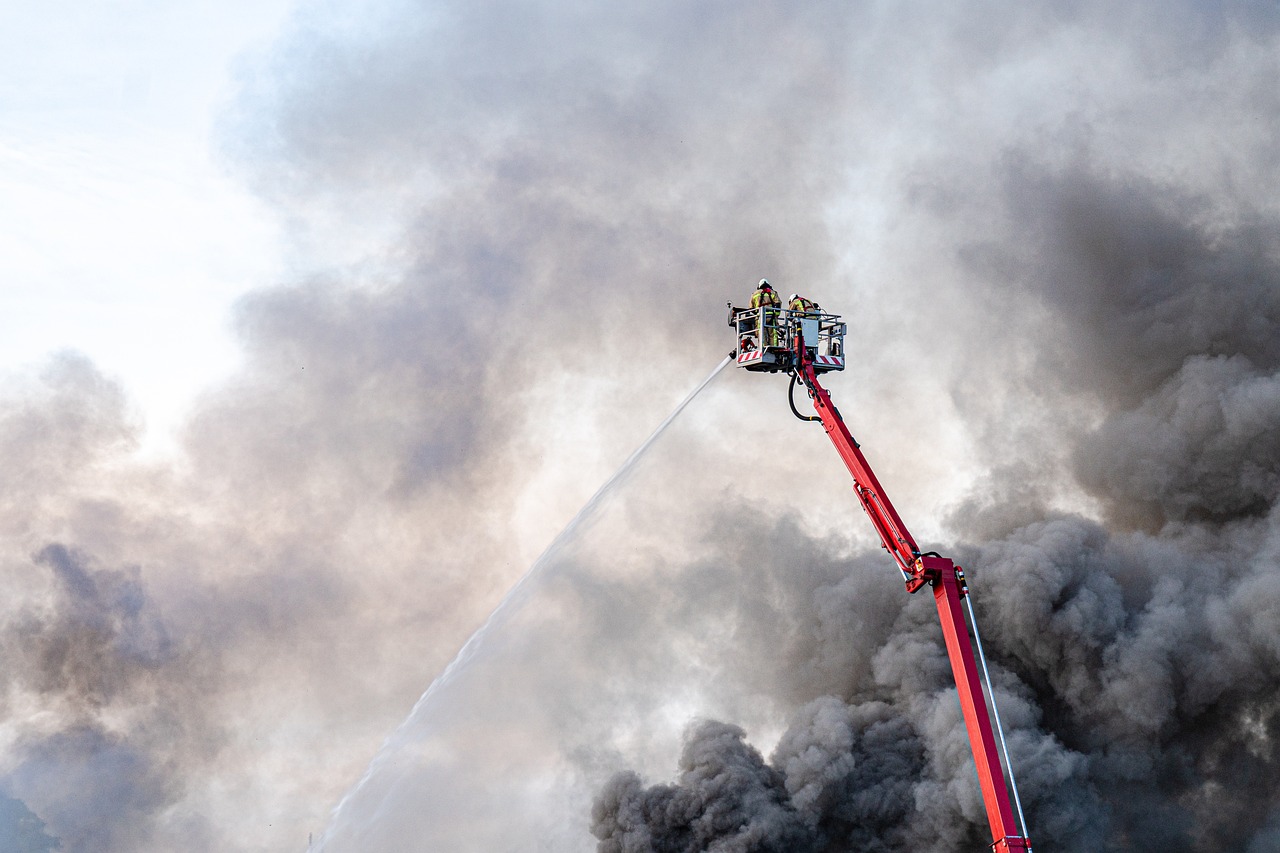
Choosing the Right Smoke Detector
When it comes to safeguarding your home from fire hazards, choosing the right smoke detector is a critical step that can’t be overlooked. Think of smoke detectors as the vigilant guardians of your home, always on the lookout for danger. But did you know that not all smoke detectors are created equal? Understanding the different types available can help you make an informed decision that best suits your needs.
There are primarily two types of smoke detectors: ionization detectors and photoelectric detectors. Ionization detectors are generally more responsive to flaming fires, which can ignite quickly and produce less smoke. On the other hand, photoelectric detectors are better suited for smoldering fires, which tend to produce more smoke before bursting into flames. It’s like having a two-pronged approach to fire safety; by installing both types, you can cover a wider range of potential fire scenarios.
But how do you decide which one is right for your home? Here are a few factors to consider:
- Location: Where will the detector be installed? Kitchens and hallways might benefit from different types.
- Household Needs: Do you have pets or children? Consider their safety and the likelihood of false alarms.
- Budget: While it’s essential to invest in quality devices, there are options available for various budgets.
Once you’ve made your choice, it’s crucial to ensure proper installation. Most smoke detectors come with clear instructions, but if you’re unsure, don’t hesitate to call in a professional. Remember, a smoke detector that isn’t installed correctly is like a knight without armor—it won’t be able to protect you when it matters most.
Regular maintenance is also key to ensuring your smoke detectors are always ready to spring into action. Test them monthly to confirm they’re working, and replace the batteries at least once a year. If your smoke detector is over ten years old, it might be time for a replacement. Just like any other device in your home, smoke detectors have a lifespan, and keeping them updated is crucial for maintaining safety.
In summary, choosing the right smoke detector involves understanding the types available, considering your specific needs, and ensuring proper installation and maintenance. By taking these steps, you’re not just installing a device; you’re investing in the safety and well-being of your loved ones. So go ahead, be proactive and make that choice today!
Q: How often should I test my smoke detectors?
A: It's recommended to test your smoke detectors at least once a month to ensure they are functioning properly.
Q: What is the lifespan of a smoke detector?
A: Most smoke detectors have a lifespan of about 10 years. After that, it's advisable to replace them.
Q: Do I need both ionization and photoelectric smoke detectors?
A: While one type can be sufficient, having both can provide comprehensive protection against different types of fires.
Q: Where should I install smoke detectors?
A: Install smoke detectors on every level of your home, inside each bedroom, and outside sleeping areas for maximum safety.

Regular Maintenance Tips
To ensure your smoke detectors are always ready to spring into action, regular maintenance is not just a suggestion; it’s a necessity. Think of your smoke detector as the guardian of your home, tirelessly watching over you and your loved ones. Just like any guardian, it needs a little TLC to perform at its best. Here are some essential tips to keep in mind:
First and foremost, testing your smoke detectors should be a monthly ritual. Simply press the test button on the unit; if you hear that reassuring beep, you're in good shape! If there's silence, it’s time to replace the batteries. Speaking of batteries, it’s wise to change them at least once a year. A good rule of thumb is to do this when you change your clocks for daylight saving time—it's a simple way to remember!
Next, consider the cleaning aspect. Dust and debris can accumulate in your smoke detector, hindering its ability to function properly. A quick vacuum with a soft brush attachment or a gentle wipe with a damp cloth can do wonders. Just be careful not to use any harsh chemicals that could damage the unit. Additionally, if you have a battery-operated detector, be sure to replace the entire unit every 10 years. Smoke detectors don't last forever, and a new one can offer better technology and reliability.
It’s also essential to ensure that your smoke detectors are installed in the right locations throughout your home. The general recommendation is to place them on every level of your home, inside each bedroom, and outside sleeping areas. This way, you maximize the chances of being alerted in case of an emergency. If you have a larger home or one with multiple stories, consider hardwired smoke detectors that can connect to each other. This means that if one goes off, they all do—talk about a team effort!
Lastly, don’t forget to keep a maintenance log. Documenting when you test and clean your smoke detectors can help you stay organized and ensure you never miss an important task. You might even consider creating a simple table to track your activities:
| Date | Task Performed | Notes |
|---|---|---|
| MM/DD/YYYY | Tested smoke detectors | All functioning |
| MM/DD/YYYY | Replaced batteries | Changed to new lithium batteries |
| MM/DD/YYYY | Cleaned detectors | Used vacuum attachment |
By following these regular maintenance tips, you'll not only ensure that your smoke detectors are functioning optimally but also contribute to a safer home environment. Remember, a few minutes of maintenance can make a significant difference in an emergency!
- How often should I test my smoke detectors? It is recommended to test your smoke detectors monthly.
- When should I replace my smoke detectors? Replace battery-operated smoke detectors every 10 years.
- What should I do if my smoke detector goes off? Evacuate the area immediately and call emergency services if there is a fire.
- Can I clean my smoke detector? Yes, gently vacuum or wipe your smoke detector to keep it free of dust and debris.

Security Systems
In today's world, ensuring the safety of your home is more important than ever. A robust security system can be your first line of defense against intruders, providing you with peace of mind and a sense of security for your loved ones. There are various types of security systems available, each designed to cater to different needs and preferences. From traditional alarm systems to advanced smart home technologies, the options are plentiful. But how do you choose the right one for your home?
When considering a security system, think about the specific features that will benefit your household. For instance, do you want a system that can be monitored remotely? Would you feel safer with cameras installed around your property? Here are some common types of security systems you might encounter:
- Wired Security Systems: These systems are hardwired into your home, offering reliable performance but can be more complicated to install.
- Wireless Security Systems: Easier to install and relocate, these systems use Wi-Fi or cellular signals to communicate with monitoring services.
- Smart Security Systems: Integrating with your smartphone, these systems allow you to control locks, cameras, and alarms remotely.
Each type has its benefits, but it's crucial to assess what fits your lifestyle and home layout best. For example, if you live in a larger home or a neighborhood with higher crime rates, investing in a comprehensive system with multiple cameras and motion sensors might be wise. On the other hand, a smaller apartment might only require a simple alarm system.
Additionally, many modern security systems come with features like motion detection, smart alerts, and even video surveillance. These features not only enhance your home's security but also allow you to monitor your property in real-time, no matter where you are. Imagine being able to check your front door camera while you're at work or on vacation – that’s the power of modern technology!
Moreover, it's essential to consider the installation and maintenance of these systems. Some systems can be self-installed, which can save you money, while others might require a professional installation. Always check for warranties and customer support options, as these can be invaluable if issues arise. Remember, a security system is only as good as its maintenance; if it’s not functioning correctly, it won’t protect you when you need it most.
Finally, don't forget about the psychological aspect of security. Just having a visible security system can deter potential intruders. A well-placed camera or a sign indicating that your home is monitored can be enough to make someone think twice before attempting to break in. So, when you invest in a security system, you’re not just buying equipment; you’re also investing in peace of mind for you and your family.
1. How much does a home security system cost?
The cost can vary widely based on the type of system, features, and installation options. Basic systems can start at a few hundred dollars, while more advanced setups can run into the thousands.
2. Do I need a professional to install my security system?
It depends on the system. Some wireless systems are designed for DIY installation, while others may require professional help for optimal performance.
3. Can I monitor my security system remotely?
Yes! Many modern security systems offer mobile apps that allow you to monitor your home from anywhere, providing real-time alerts and updates.
4. What should I do if my alarm goes off?
Stay calm and assess the situation. If you suspect a break-in, call the authorities immediately. If it’s a false alarm, check your system to identify the cause.

Common Home Hazards
Identifying and addressing common home hazards is crucial for maintaining a safe living environment. Every home has its unique quirks, but certain risks are prevalent across the board. From slippery floors to overloaded electrical outlets, understanding these hazards can help you take proactive steps to mitigate them. Did you know that falls are one of the leading causes of injuries in the home? It's shocking, isn't it? By becoming aware of potential dangers, you can significantly reduce the likelihood of accidents and keep your loved ones safe.
One of the most common hazards in homes is the risk of slips, trips, and falls. These accidents often occur in areas where there is little to no traction, such as bathrooms or kitchens. To combat this, consider implementing a few simple strategies:
- Keep walkways clear of clutter and obstacles.
- Use non-slip mats in areas prone to moisture.
- Ensure that all rugs are secured with non-slip backing.
By taking these steps, you can create a safer environment that minimizes the risk of falls. Additionally, it’s important to regularly inspect your home for any potential hazards, such as loose floorboards or uneven surfaces, and address them promptly.
Another significant concern is electrical safety. Many homeowners may not realize that electrical hazards can pose serious threats, often leading to fires or electric shocks. Common issues include:
- Overloaded outlets
- Frayed or damaged cords
- Exposed wiring
To ensure your home is electrically safe, check your outlets and cords regularly. If you notice any signs of wear or damage, it’s crucial to replace them immediately. Moreover, consider hiring a licensed electrician to conduct a thorough inspection of your home’s wiring, especially if you live in an older house.
In addition to slips, falls, and electrical hazards, it’s essential to be mindful of other potential risks, such as toxic substances and environmental dangers. For instance, many household products contain chemicals that can be harmful if ingested or improperly handled. Store cleaning supplies, medications, and other hazardous materials out of reach of children and pets. A good practice is to keep these items in locked cabinets to prevent accidental exposure.
Lastly, don’t forget about the importance of fire safety. Regularly check smoke detectors and ensure that you have a fire extinguisher readily available in case of emergencies. Familiarize yourself with your home’s escape routes and conduct fire drills with your family to ensure everyone knows what to do in case of a fire.
In summary, being proactive about common home hazards can make a world of difference in ensuring the safety of your living space. By taking the time to assess risks and implement preventive measures, you can create a safer environment for yourself and your loved ones.
1. What are the most common home hazards?
The most common home hazards include slips, trips, falls, electrical issues, and exposure to toxic substances. Regularly assess your home for these risks to enhance safety.
2. How can I prevent slips and falls in my home?
To prevent slips and falls, keep walkways clear, use non-slip mats, and ensure rugs are secured. Regularly check for loose floorboards and uneven surfaces.
3. When should I call an electrician?
If you notice frayed cords, overloaded outlets, or any signs of electrical issues, it's best to call a licensed electrician for a thorough inspection.
4. How often should I check my smoke detectors?
It's recommended to test your smoke detectors monthly and replace the batteries at least once a year. Additionally, replace the units themselves every ten years.

Preventing Slips and Falls
Slips and falls are not just minor inconveniences; they can lead to serious injuries, especially in the home. Imagine walking through your living room, only to trip over a stray toy or a loose rug. It’s a scenario many of us can relate to, yet it’s one that can easily be avoided with a few simple precautions. is all about being proactive and creating a safe living environment.
First and foremost, keeping your walkways clear is essential. This means regularly picking up items that may be lying around, such as shoes, bags, and even pet toys. A clutter-free space not only looks better but also significantly reduces the risk of stumbling. You might think, "Oh, I’ll just move that later," but trust me, later might be too late!
Next, consider the flooring in your home. Certain materials can be slippery, especially when wet. If you have tile or hardwood floors, think about using non-slip mats in areas that are prone to moisture, like the kitchen and bathroom. Additionally, using rugs can help, but make sure they have a non-slip backing to prevent them from sliding around. A simple solution can make a world of difference!
Another often-overlooked aspect of fall prevention is lighting. Poorly lit areas can create hazards that are hard to see. Ensure that hallways, staircases, and entryways are well-lit. You might want to install motion-sensor lights that turn on automatically when someone enters the area. This way, you won’t have to fumble for a light switch in the dark, reducing the chances of a nasty fall.
For those with stairs in their homes, it’s crucial to take extra precautions. Make sure that handrails are securely installed and easy to grip. If you have a staircase, consider adding non-slip treads to each step. These little additions can provide extra traction and peace of mind. Remember, even a small misstep can lead to a big fall!
Lastly, don’t forget about the power of footwear. Wearing the right shoes can significantly impact your stability. Avoid slippery soles and opt for shoes with good grip. If you’re at home, consider going barefoot or wearing socks with rubber grips. It’s a small change that can have a big impact on your safety.
In summary, preventing slips and falls in your home is all about awareness and taking action. By keeping your spaces tidy, ensuring proper lighting, using non-slip materials, and being mindful of your footwear, you can create a safer environment for yourself and your loved ones. Remember, safety doesn’t happen by accident—it’s a choice we make every day.
- What are the most common causes of slips and falls in the home?
Common causes include cluttered walkways, wet floors, poor lighting, and uneven surfaces.
- How can I make my bathroom safer?
Consider using non-slip mats, grab bars, and ensuring that the area is well-lit to prevent falls.
- Should I use rugs in my home?
Yes, but make sure they have non-slip backing to prevent them from sliding around.
- What types of shoes should I wear at home?
Opt for shoes with good grip or consider going barefoot or wearing socks with rubber grips.
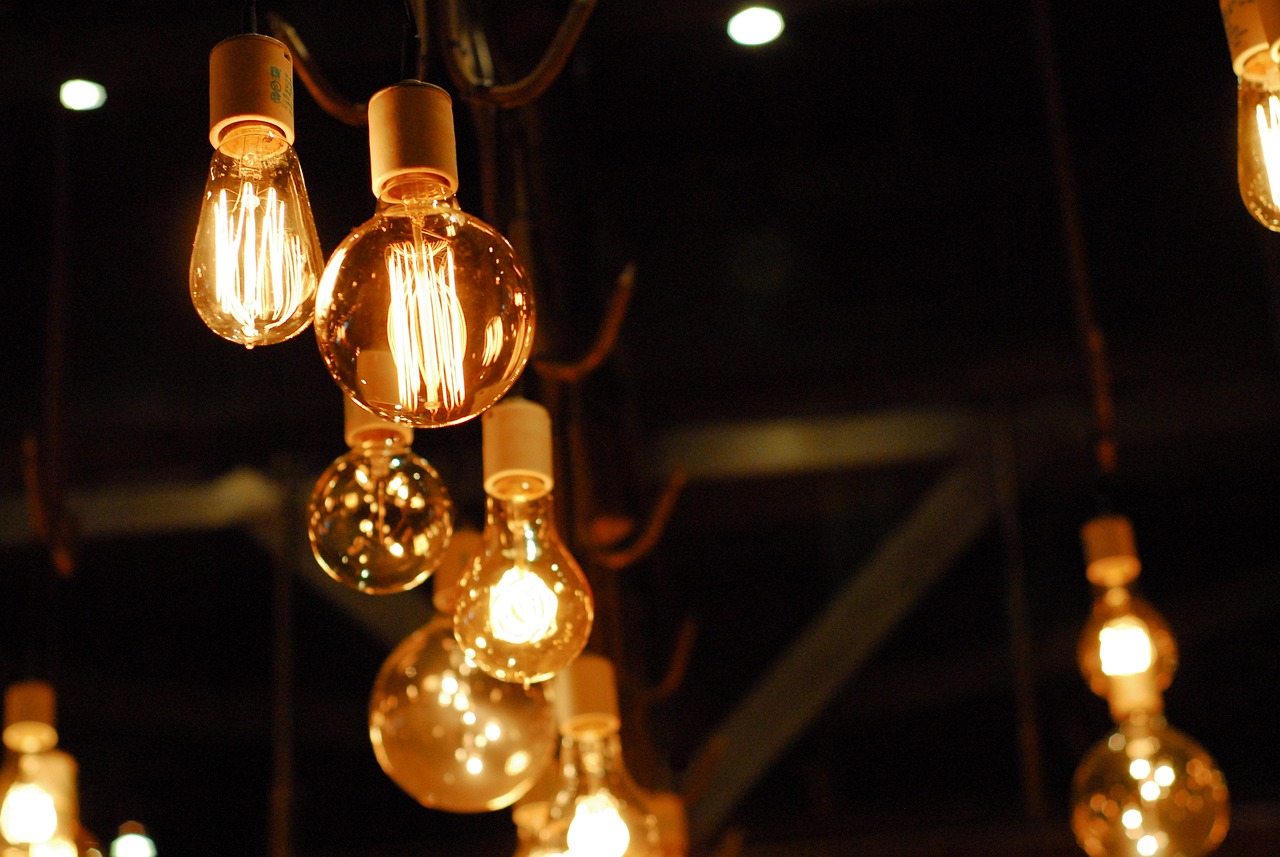
Electrical Safety Risks
When it comes to home safety, one of the most critical areas to consider is electrical safety. Electrical hazards can pose serious threats, often lurking behind the scenes and going unnoticed until it's too late. Imagine flickering lights, a strange buzzing sound from an outlet, or the smell of burning plastic—these can all be signs of electrical issues that demand immediate attention. Understanding these risks not only helps in preventing accidents but also ensures that your home remains a safe haven for you and your loved ones.
Common electrical hazards include:
- Overloaded Circuits: Plugging too many devices into a single outlet can cause overheating and potentially lead to fires. It's essential to know the limits of your electrical system.
- Frayed Cords: Damaged electrical cords can spark and ignite, making it crucial to inspect your cords regularly and replace any that show signs of wear.
- Improperly Installed Wiring: If your home has outdated or improperly installed wiring, it can create serious safety risks. Always consult a professional electrician for installations and repairs.
So, how do you mitigate these risks? Here are a few practices that can help you maintain a safe electrical environment:
- Regularly check and replace any frayed or damaged cords.
- Use surge protectors for sensitive electronics to prevent damage from power surges.
- Be mindful of the number of devices plugged into a single outlet.
Additionally, knowing when to call in a professional is vital. If you experience frequent circuit trips, flickering lights, or any unusual electrical behavior, don't hesitate to reach out to a licensed electrician. They can perform a thorough inspection and address any underlying issues that could pose a danger.
By staying informed and proactive about electrical safety, you can significantly reduce the risk of accidents in your home. Remember, a little vigilance goes a long way in protecting yourself and your loved ones from potential hazards.
Q: What should I do if I see sparks from an outlet?
A: If you see sparks, unplug any devices immediately and avoid using that outlet. Contact a qualified electrician to inspect and repair the issue.
Q: How often should I have my home's electrical system inspected?
A: It's recommended to have a professional inspection every 3 to 5 years, or sooner if you notice any issues.
Q: Can I replace electrical cords myself?
A: While minor repairs can be done by homeowners, it's best to consult a professional for safety and compliance with local codes.

Childproofing Your Home
When it comes to ensuring the safety of your little ones, is not just a good idea—it's essential. Children are naturally curious, and their explorative nature can lead them into potentially dangerous situations if proper precautions aren't taken. Think of your home as a playground filled with hidden hazards; by taking the right steps to childproof it, you're essentially transforming that playground into a safe haven. So, what does childproofing entail? Let's dive into some effective measures that can help you create a secure environment for your kids.
First and foremost, safe storage solutions are a cornerstone of childproofing. Hazardous items such as cleaning supplies, medications, and sharp objects should be stored out of reach. Consider using high cabinets with childproof locks or placing dangerous items in a locked drawer. It's also a good idea to regularly review your storage practices; as your child grows and becomes more mobile, the risks can change. For instance, a toddler may not reach for a high shelf, but as they grow into a preschooler, that same shelf could become a climbing target.
Moreover, creating safe play areas is another vital aspect. Designating specific areas for play can significantly reduce the chances of accidents. When selecting toys, opt for age-appropriate options that don't have small parts which could pose choking hazards. Additionally, ensure that outdoor spaces are secure—fencing can keep your kids safe from wandering off, while soft ground coverings can cushion any falls. Remember, the goal is to create an environment where your children can explore freely without constant adult supervision.
In addition to these measures, it's crucial to be aware of common hazards around the home. For instance, furniture with sharp edges can be dangerous during rambunctious playtime. Consider using corner guards to soften those edges. Likewise, securing heavy furniture to the wall can prevent tipping, which is a significant risk as children begin to climb. In the kitchen, installing safety latches on cabinets can keep curious hands away from knives and other dangerous utensils. The bathroom is another area that requires attention; always keep medications and toiletries stored securely and never leave a child unattended in the tub, even for a moment.
Finally, regular communication about safety with your children, even at a young age, can instill good habits. Teach them what is off-limits and why. Use simple language and relatable analogies to help them understand. For example, you might say, “The stove is hot like the sun; we don’t touch it.” This not only helps them learn about safety but also builds a trusting relationship where they feel comfortable asking questions about their environment.
Q: At what age should I start childproofing my home?
A: It's best to start childproofing as soon as your baby begins to crawl, typically around 6 to 10 months. This proactive approach helps prevent accidents before they happen.
Q: What are the most critical areas to childproof?
A: Key areas include the kitchen, bathroom, living room, and any outdoor spaces. Focus on places where hazardous items are stored and where children frequently play.
Q: How often should I reassess my childproofing measures?
A: It's a good idea to reassess your childproofing measures every few months or whenever your child reaches a new developmental stage. As they grow, their abilities and curiosity will change, requiring adjustments to your safety precautions.
Q: Are there professional services for childproofing?
A: Yes, there are professional childproofing services that can assess your home and recommend safety measures tailored to your specific needs. This can be especially useful if you're unsure where to start.
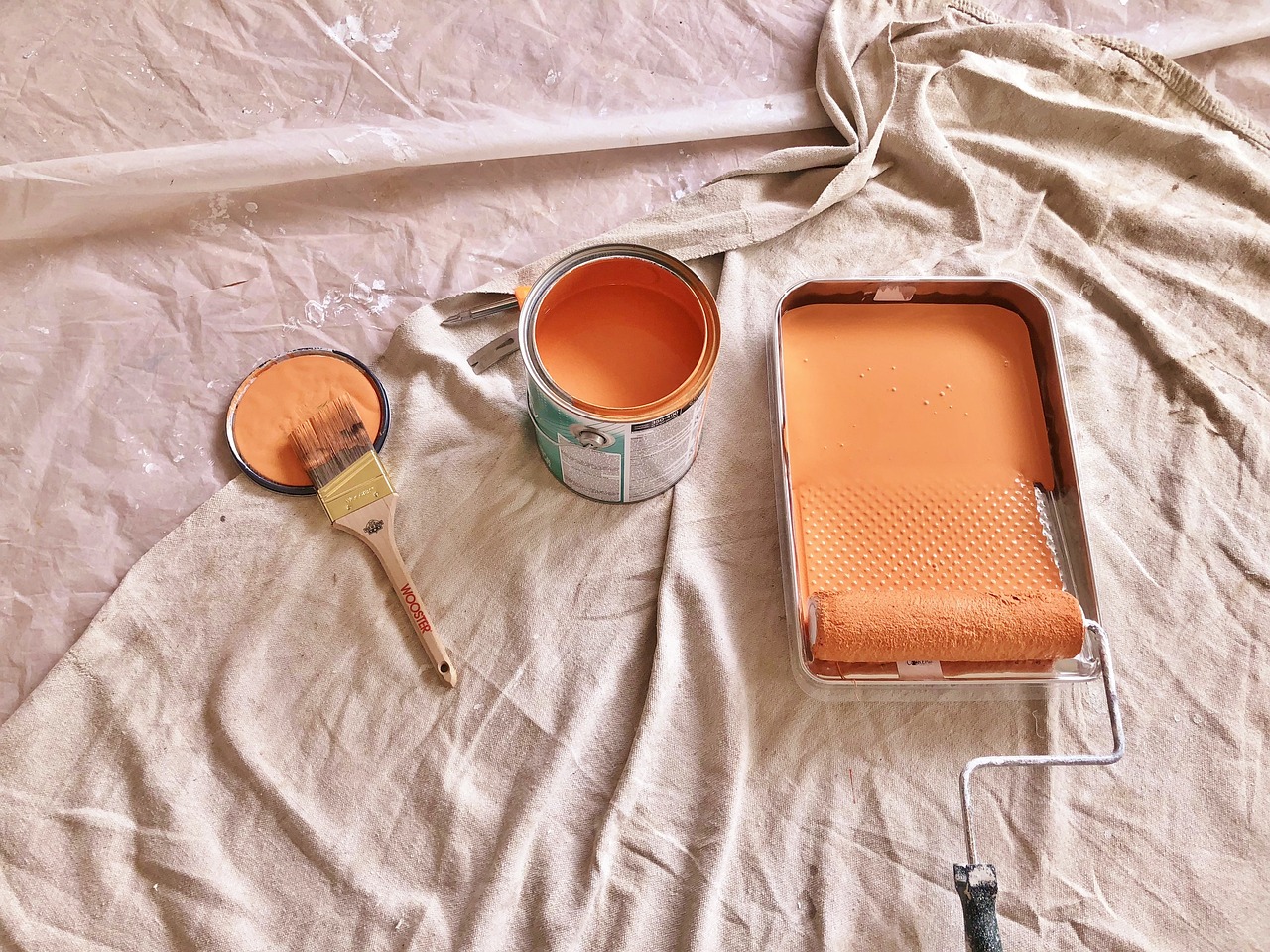
Safe Storage Solutions
Creating a safe environment for children involves more than just keeping an eye on them; it includes strategically storing hazardous items out of their reach. Imagine your home as a treasure chest, where the most valuable items—like cleaning supplies, medications, and sharp objects—need to be locked away to ensure safety. It's essential to think like a child: if they can see it, they might want to explore it. Therefore, it's crucial to implement that prevent accidents before they happen.
One effective method is to use high cabinets or locked drawers for storing dangerous items. For instance, cleaning products should be kept in cabinets that are above the counter and equipped with childproof locks. This simple measure can significantly reduce the risk of accidental poisoning. Additionally, consider using clear containers for storage, which can help you quickly identify the contents without having to dig through clutter. This not only keeps your home organized but also allows for easier monitoring of what’s accessible to your little ones.
Another aspect to consider is the organization of medications. It's advisable to store all medications, including over-the-counter drugs, in a locked cabinet or a high shelf. You might think that placing them in a bathroom cabinet is safe, but children are naturally curious and may find ways to reach them. A good rule of thumb is to keep all medications in a separate area, ideally in a location that is not easily accessible to children. Here’s a quick overview of some safe storage solutions:
| Item | Recommended Storage Solution |
|---|---|
| Cleaning Supplies | High cabinets with childproof locks |
| Medications | Locked cabinet or high shelf |
| Sharp Objects | Drawer with a childproof lock |
| Toys with Small Parts | Storage bins out of reach |
Additionally, when it comes to toys, ensure that those with small parts are stored in bins that are out of reach, or simply choose toys that are age-appropriate and do not pose choking hazards. This proactive approach not only keeps your children safe but also promotes a sense of responsibility and organization within your home. Remember, a clutter-free environment is not only visually appealing but also plays a significant role in enhancing safety.
In conclusion, implementing safe storage solutions is a vital step in childproofing your home. By taking the time to assess where you keep potential hazards and making necessary adjustments, you create a secure environment that allows your children to explore freely and safely. It’s all about being one step ahead—because when it comes to child safety, it’s better to be safe than sorry!
- What are the most dangerous items to store within reach of children? Cleaning supplies, medications, and sharp objects are the most hazardous and should always be stored out of reach.
- How can I childproof my cabinets? Use childproof locks or latches on cabinets that contain potentially dangerous items.
- Are there specific containers I should use for safe storage? Clear, labeled containers are ideal as they help you identify contents quickly and keep everything organized.

Creating Safe Play Areas
Creating safe play areas for your children is not just a good idea; it's essential for their well-being and your peace of mind. Imagine your backyard transformed into a vibrant playground, where laughter echoes and imaginations run wild, all while ensuring that every corner is free from hazards. To achieve this, start by assessing the space you have available. Look for areas that can be designated as play zones, ensuring they are away from potential dangers such as busy roads or sharp objects.
When setting up a play area, consider the types of activities your children enjoy. Do they love climbing, swinging, or perhaps building forts? Each activity requires different safety measures. For instance, if you have a swing set, make sure it’s installed on a soft surface like mulch or rubber mats to cushion any falls. This not only enhances safety but also encourages your kids to engage in physical play, which is crucial for their development.
Moreover, the choice of toys and equipment plays a significant role in creating a safe play environment. Opt for age-appropriate toys that are sturdy and free from small parts that could pose choking hazards. When selecting outdoor toys, look for those made from durable materials that can withstand weather conditions. It’s also wise to regularly inspect these items for wear and tear. A simple check can prevent accidents and ensure that your children are playing safely.
Another important aspect is to establish clear boundaries within the play area. Use natural markers like bushes or fences to define the space. This not only helps keep children within a safe zone but also teaches them about boundaries and safety. Additionally, consider implementing rules for playtime, such as no pushing or roughhousing, to further minimize the risk of injury.
Finally, don’t forget about the importance of supervision. While creating a safe play area is crucial, nothing beats the watchful eye of a parent or guardian. Being present not only helps prevent accidents but also allows you to engage with your children, making playtime even more enjoyable. Remember, a safe play area is one where kids can explore and learn while knowing that they are protected.
- What are the best materials for a safe play area surface? Soft materials like rubber mats, grass, or wood chips are ideal as they provide cushioning for falls.
- How can I childproof outdoor play equipment? Regularly inspect the equipment for sharp edges, loose parts, and ensure it’s anchored securely to prevent tipping.
- What should I do if my child gets injured while playing? Always have a first aid kit handy and know basic first aid procedures to handle minor injuries effectively.

Emergency Preparedness
Being prepared for emergencies is not just a good idea; it’s a necessity that can make all the difference when disaster strikes. Imagine waking up in the middle of the night to the sound of a fire alarm or an earthquake shaking your home. In those moments, having a solid plan in place can be the difference between chaos and calm. Emergency preparedness involves more than just having a few supplies tucked away. It requires a thoughtful approach that encompasses planning, training, and regular updates to your strategy.
First and foremost, creating an emergency plan is essential. This plan should outline what steps to take in various scenarios, such as fires, natural disasters, or medical emergencies. Think of it as your family’s roadmap in times of crisis. It’s important to include details like evacuation routes, meeting points outside the home, and communication methods. For example, if family members are separated during an emergency, how will you reconnect? Establishing a designated contact person outside the immediate area can help ensure everyone is accounted for.
Next, let’s talk about the all-important emergency kit. This kit should be stocked with essential items that can sustain you and your family for at least 72 hours. It’s like your safety net in a bag. Some of the key items to include are:
- Water: At least one gallon per person per day.
- Non-perishable food: Think canned goods, energy bars, and dried fruits.
- First aid supplies: Bandages, antiseptics, and any necessary medications.
- Flashlights and batteries: Power outages can happen at any time.
- Multi-tool or Swiss army knife: Handy for various tasks.
- Whistle: To signal for help if needed.
- Important documents: Copies of IDs, insurance policies, and medical records.
When putting your emergency kit together, consider the unique needs of your family. If you have pets, don’t forget to include supplies for them as well! Regularly check your kit to ensure that food and medications are not expired, and update it as your family’s needs change.
Lastly, training is just as crucial as planning and preparation. Conduct regular drills with your family to ensure everyone knows what to do in an emergency. This practice can help reduce panic and confusion when the real thing happens. Think of it like a fire drill at school; the more familiar you are with the process, the more instinctive your reactions will be. It’s also beneficial to take first aid and CPR classes to equip yourself with the skills needed to help others in emergencies.
In summary, emergency preparedness is about creating a comprehensive plan, assembling a well-stocked emergency kit, and practicing your response. By taking these proactive steps, you can significantly enhance your home’s safety and your family’s peace of mind. Remember, the best time to prepare for an emergency is before it happens!
Q: What should I include in my emergency kit?
A: Your emergency kit should include water, non-perishable food, a first aid kit, flashlights, batteries, a multi-tool, and important documents. Tailor it to your family’s specific needs, including items for pets if necessary.
Q: How often should I review my emergency plan?
A: It’s a good idea to review your emergency plan at least once a year or whenever there are significant changes in your family situation, such as a new baby or a move.
Q: What is the best way to communicate during an emergency?
A: Designate a family member as the out-of-town contact person. This person can help keep everyone informed about each other’s safety and whereabouts.
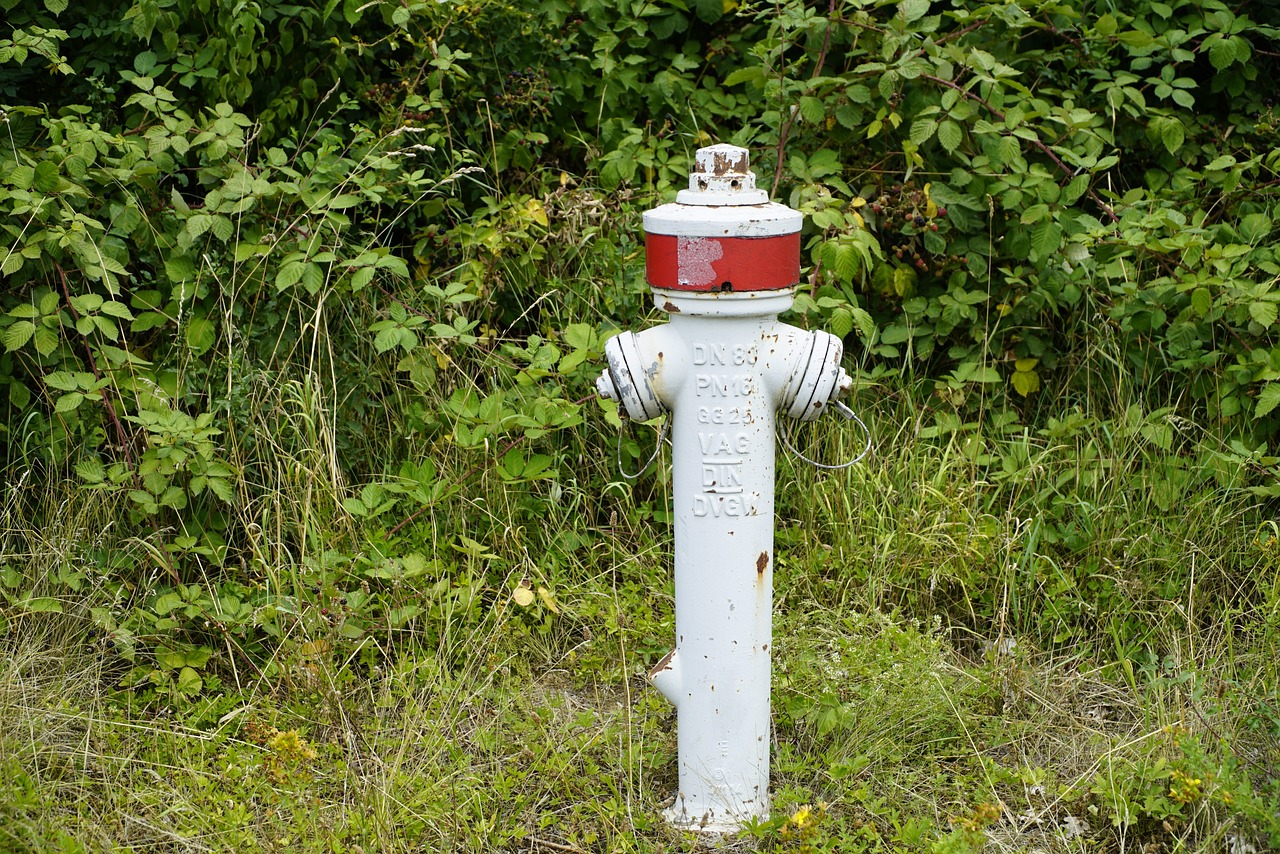
Creating an Emergency Plan
When it comes to home safety, having a well-thought-out emergency plan is your best defense against the unexpected. Think of it as your family's safety net—a way to ensure that everyone knows what to do when disaster strikes. But how do you go about creating one? It's not as daunting as it sounds! Start by gathering your loved ones and discussing potential emergencies that could occur in your area, such as fires, earthquakes, or severe weather. This conversation is crucial because it sets the stage for understanding the risks you face.
Next, outline a clear and concise plan that includes evacuation routes and designated meeting points. Imagine you’re playing a game of hide and seek; you need to know where to go once the game starts! Your meeting point should be a safe distance from your home, allowing everyone to regroup without fear of danger. It’s also wise to have a backup location in case the first one is compromised. To help visualize your plan, consider creating a simple map that highlights these routes and locations.
Communication is another vital aspect of your emergency plan. In the chaos of an emergency, it’s easy for family members to become separated. Establish a communication strategy that includes:
- Designating a family member as the main point of contact.
- Sharing important phone numbers, including local emergency services, relatives, and neighbors.
- Utilizing text messages or social media to communicate if phone lines are down.
Moreover, don’t forget to practice your emergency plan regularly. Just like rehearsing for a school play, practicing your plan ensures that everyone knows their roles and responsibilities. Conduct drills at least twice a year to keep the information fresh in everyone’s minds. During these drills, evaluate what went well and what could be improved. This reflection is essential for refining your plan and making it more effective.
Lastly, consider creating an emergency kit that includes essential supplies. This kit should be easily accessible and contain items such as water, non-perishable food, first aid supplies, flashlights, batteries, and any necessary medications. You can even use a checklist to ensure you have everything you need:
| Item | Quantity |
|---|---|
| Water (1 gallon per person per day) | 3-day supply |
| Non-perishable food | 3-day supply |
| First aid kit | 1 |
| Flashlight | 1 |
| Batteries | Assorted |
| Medications | As needed |
By taking these steps to create an effective emergency plan, you’re not just preparing for the worst; you’re also empowering your family with the knowledge and tools to handle any situation that comes your way. Remember, safety is not just a priority; it’s a lifestyle!
Q: How often should we review our emergency plan?
A: It’s recommended to review your emergency plan at least twice a year, or whenever there are changes in your family situation or living environment.
Q: What should I include in my emergency kit?
A: Your emergency kit should include water, non-perishable food, a first aid kit, flashlights, batteries, and any necessary medications. Customize it based on your family’s specific needs.
Q: How can I ensure my children understand the emergency plan?
A: Involve your children in the planning process and conduct regular drills. Use simple language and encourage them to ask questions to ensure they grasp the plan.
Q: What if my family is separated during an emergency?
A: Establish a communication plan that includes a designated meeting point and a main point of contact. Teach your family how to use text messages or social media for updates if phone lines are down.

Building an Emergency Kit
When it comes to home safety, being prepared for the unexpected can make all the difference. An emergency kit is your first line of defense during crises, whether it's a natural disaster, a power outage, or any unforeseen event. Imagine having everything you need at your fingertips when chaos strikes. Sounds comforting, right? To build an effective emergency kit, you need to consider various essential items that will help you survive and stay safe until help arrives or the situation stabilizes.
Your emergency kit should cater to the specific needs of your household, but there are some universal items that everyone should include. Think of it as a safety net: the stronger and more comprehensive it is, the more secure you will feel. Here’s a breakdown of the key components your emergency kit should contain:
| Item | Description |
|---|---|
| Water | At least one gallon per person per day for at least three days, for drinking and sanitation. |
| Non-perishable Food | A three-day supply of food that doesn’t require cooking, such as canned goods, granola bars, and dried fruits. |
| Flashlight | A reliable flashlight with extra batteries to light your way during power outages. |
| First Aid Kit | A comprehensive kit that includes bandages, antiseptics, and any necessary prescription medications. |
| Multi-tool | A versatile tool that can serve multiple functions, including cutting, screwing, and opening bottles. |
| Whistle | A whistle can be used to signal for help in case you are trapped or need assistance. |
| Personal Hygiene Items | Sanitation supplies like moist towelettes, garbage bags, and toilet paper to maintain hygiene. |
| Important Documents | Copies of personal documents such as insurance policies, identification, and medical information. |
Now, while the above items are crucial, it’s also vital to customize your kit according to your family's unique needs. For instance, if you have infants, you might want to include baby formula and diapers. If someone in your household has specific medical conditions, ensure you have their medications and relevant medical supplies. Think about your pets, too! They need food, water, and possibly medications in case of an emergency.
Once you've gathered your supplies, don't forget to regularly check and update your emergency kit. Items like food and water have expiration dates, so a little maintenance goes a long way in ensuring your kit remains effective. Aim to review your kit at least twice a year, perhaps when you change your clocks for daylight saving time. This way, you can rotate out expired items and add any new necessities that may have arisen since your last check.
Finally, it's not just about building the kit; it's about knowing how to use it. Sit down with your family and go over the contents of your emergency kit. Discuss what each item is for and how to use them effectively. This practice can be incredibly reassuring, especially for children, as it empowers them to take part in their own safety.
- How often should I check my emergency kit? It's recommended to check your emergency kit at least twice a year to ensure all items are in good condition and not expired.
- What should I do if I have special dietary needs? Customize your emergency food supplies according to your dietary restrictions, ensuring you have enough non-perishable options that meet your needs.
- Can I store my emergency kit in my car? Yes, keeping a smaller emergency kit in your car can be helpful, especially for road trips or long commutes.
- What should I do if I run out of space for my emergency kit? Consider using a backpack or a storage bin that can be easily accessed and transported during an emergency.
Frequently Asked Questions
- What are the basic principles of home safety?
Home safety starts with awareness. Understanding the common risks, such as slips, falls, and fire hazards, is crucial. Regularly inspecting your home and being proactive about potential dangers can help keep your family safe.
- What essential safety equipment should I have in my home?
It's important to equip your home with key safety devices. This includes smoke detectors, fire extinguishers, and a security system. These tools can significantly reduce risks and enhance your peace of mind.
- How often should I test my smoke detectors?
You should test your smoke detectors at least once a month. Additionally, replace the batteries twice a year and consider replacing the unit itself every 10 years to ensure optimal performance.
- What steps can I take to prevent slips and falls?
To prevent slips and falls, keep walkways clear, use non-slip mats in wet areas, and ensure proper lighting throughout your home. Regularly check for loose rugs and repair any uneven flooring.
- How can I childproof my home effectively?
Childproofing involves securing hazardous items, such as cleaning supplies and medications, out of reach. Additionally, create safe play areas and choose age-appropriate toys to minimize risks for young children.
- What should be included in an emergency kit?
Your emergency kit should include items like water, non-perishable food, a flashlight, batteries, a first aid kit, and any necessary medications. Don’t forget important documents and a communication plan!
- How do I create an effective emergency plan?
An effective emergency plan outlines clear steps for your family during crises. Include evacuation routes, communication methods, and designated meeting spots to ensure everyone knows what to do in an emergency.



















